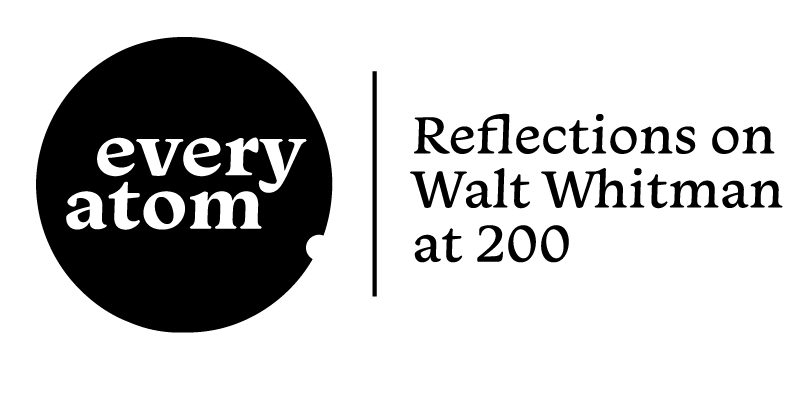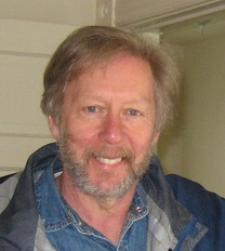Every Atom | No. 46
Introduction to Every Atom by project curator Brian Clements
The thing about Whitman that all of us know, sometimes without even knowing we know, is that he talks directly to us in “Song of Myself.” You don’t overhear him, nor is he talking to himself, and when he talks directly to you often what he says is that he’s talking directly to you. But is he always direct? Is there any indirection in his poem? Consider this line on the poem’s first page: “A few light kisses . . . . a few embraces . . . . a reaching around of arms.” The fade-out ellipses not only suggest a vague sweeping gesture of inclusion, they also imply what the poet doesn’t say, and from the beginning he doesn’t say a lot. It’s a wink of space he alludes to in this line, an inner space of desire, and throughout the poem I associate moments like this one with his ellipses. They are a gulf in time, an air pocket, or even one of those pauses in your beating heart that seems to last forever before it jump-starts again. The ellipses are one of the chief features that make the 1855 version of “Song of Myself” the superior one, I believe, because they illustrate the fact that the man who says you shall no longer take things at second or third hand is also sly and indirect. In other words, the unsaid is just as important as the said in Whitman’s poem; or, to reverse what he says elsewhere in the poem, the seen is proven by the unseen.
Recommended
Nor’easter
Post-Op Appointment With My Father
Cedar Valley Youth Poet Laureate | Fall 2024 Workshop







